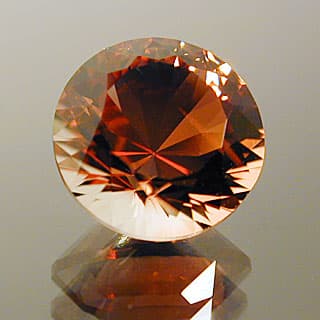Choosing the Right Cut: A Faceter’s Guide
Choosing the right cut for a piece of gem rough is an art. Learn how to balance brilliance with color and other factors before cutting.
10 Minute Read
Maximum Potential Shape
First, determine the maximum potential shape of your rough. This will simplify the rest of your decisions. For help with preforming your gem, read my article on the minimum cutting technique.
Brilliance
Brilliance is the goal of every faceter. After all, no one wants to spend that much energy on a lackluster gem. However, brilliance is one of the least understood principles of gemology. The term refers to how much light is reflected from the inside of a gem, expressed as a percentage. For example, a measurement of 86% means that 86% of the light entering the stone is returned to the viewer.
Ray tracing software, such as GemRay, can measure brilliance. Since some of these programs were created for the optical industry, when you apply them to gemstones they’re somewhat less than perfect. Nevertheless, they yield better data than a collection of subjective observations.
Refractive Index and Brilliance
There’s a direct relationship between the refractive index (RI) of a gem and how much brilliance it’s capable of displaying. An experienced gemologist can take a good guess at the identity of a stone by its brilliance. For example, a veteran jeweler looking at a commercial-cut…
Donald Clark, CSM IMG
Related Articles
Cutting Star and Cat’s Eye Gems
Simple Design Ideas For Freeform Gems
Gemstone Care Guide
Gemray or GemrayX Head Shadow
Never Stop Learning
When you join the IGS community, you get trusted diamond & gemstone information when you need it.
Get Gemology Insights
Get started with the International Gem Society’s free guide to gemstone identification. Join our weekly newsletter & get a free copy of the Gem ID Checklist!
